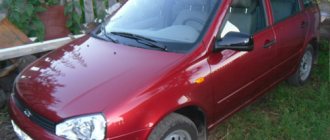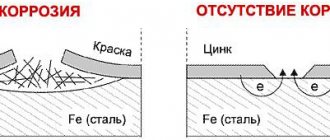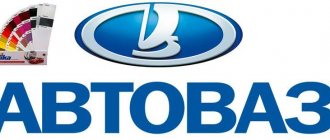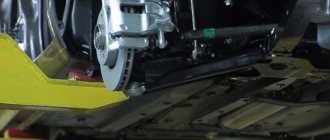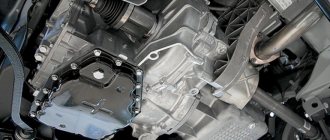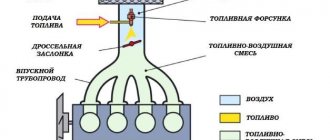in Vesta SV 03/10/2018 4,
The Russian decided to take a tangible step towards the progress of color. That is, to significantly expand the palette of shades for the Lada Vesta SV car. After the announcement of this model, interest was at a high level, because the body colors were able to please all motorists. Let's try to look at each shade in more detail. Let's find out the features of the entire color palette and how they improve the exterior of the Lada Vesta SW.
A total of 9 different shades are available. They differ from each other, increasing the buyer's choice. Car dealerships do not focus on anything specific, but still try to best suit the tastes of motorists.
Cornelian
The color scheme begins with the defiant carnelian. This metallic red tops all shades because it attracts the attention of others. It is impossible to take your eyes off the rich red color. It turned out to be in the best traditions of the executive class. Definitely suitable for people who need a positive opinion from friends who will appreciate this coloring book.
Carthage
Metallic beige is an excellent alternative to dirty white. Here we can talk about greater practicality on the roads of our country, where dust quickly stains the body even in the best weather. Carthage rightfully ranks high among bright hues when it comes to the average consumer's color choice. Lada Vesta SW in this version looks presentable, but subject to constant water procedures (washing).
Blue is not the most common color on the roads. However, it remains practical for urban environments. Small amounts of settled dust do not spoil the exterior at all. In any parking lot, blues stands out from its darker competitors. Finding a car is often not difficult. The absence of blue does not allow for comparison between shades.
↑ Choice and additional payment for color
The only free shade is white, produced under number 221. For all other colors of the Lada Vesta, the company charges an additional fee. So, for example, the shade “lime” is the most unique and unlike all other tones, so you will have to pay an additional 35 thousand rubles for it. And even if this is a considerable amount, it is impossible not to look at such a car when passing by it.
As for all other shades, the manufacturer charges much less for them, namely 12 thousand rubles. On the official AvtoVAZ website you can see what a car will look like in a particular solution, which makes choosing a car much easier.
Pluto
The most popular are the dark gray ones. Although black is still beyond competition. Pluto reserves the right to a premium look, but at the same time allows you not to get lost among friends. Some problem areas on the car body that have lost their presentability can be quickly restored with the help of simple tools, so the use of Pluto is definitely suitable for most novice motorists.
Black Pearl
Lada Vesta SW of this version looks several classes higher. Sitting behind the wheel, you feel the increased status, but the large logo on the front spoils the impression a little. The black pearl is quite easily soiled in any season. If you maintain impeccable cleanliness, then compared to more premium brands, Lada Vesta SV will seem like a worthy competitor. There is no need to talk about exclusivity: .
LadaVestaCross with silver Platinum color
This is a metallic shade, so it shimmers beautifully in the sun. Less dirty than white, the silver tint visually enlarges the car, making it even larger.
Perfectly suitable for both men and women. On the one hand, it looks solid and strict, on the other, a warm and gentle shimmer makes the car delightful.
The application technology and increased thickness of the paint coating by 25% allow the manufacturer to guarantee 6 years of corrosion-free driving.
The partially galvanized metal frame undergoes sandblasting and degreasing at the first stage.
Sequence of body painting operations:
- in a closed chamber, a layer of primer is applied by automatic spraying;
- drying in a drying chamber;
- application of enamel coating;
- drying;
- surface varnishing;
- control examination;
- manual correction of defects.
After this, the finished body enters the assembly line.
The wide color palette of the Lada Vesta is not only the development and merit of the management of the automobile concern, it is also the painting features. Thus, the process of painting the body of a Lada Vesta car model is carried out using modern technologies. At the very beginning, a thin layer of high-quality primer is applied to the galvanized metal surface - applying it using cataphoresis. This allows you to protect the metal from corrosion and destruction in the future.
Platinum and phantom
Silver and gold always go shoulder to shoulder. For extraordinary individuals, these options are the only opportunity to match a certain style that is unique only to the owner of the car. It is also worth noting a number of difficulties in selecting the right paint in case of an accident to eliminate its consequences. It is difficult to talk about practicality with prolonged use, but this entirely depends on the driving style.
Information about engines and oil consumption - in the simplest words
Vesta was supposed to be equipped with three engines. All Vestas are equipped with the Russian 21129 or the new 21279 (2016). The HR16 internal combustion engine from the Renault-Nissan concern with a maximum power of 114 horsepower did not appear. All three engines comply with Euro-5 class, are adapted for winter operation, and can work with several types of transmissions.
21129 - 106 hp engine. With. and a volume of 1.6 liters (1596 cubic centimeters), has 4 pistons arranged in a row. The maximum power is 5800 rpm, which is 78 kW. Maximum torque reaches 4200 rpm. min. This means that the maximum engine power develops at 4000 rpm, then fades out.
21279 - volume 1.8 with 122 horses, in-line, four-piston. This motor is capable of squeezing up to 5900 (90 kW) power revolutions and 3700 torque (170 N m).
Both engines are petrol with electronically controlled fuel injection. Gasoline with a 95 octane rating is recommended for them; Vesta can run at 92. The oil volume in the engines is 4.40 liters. Oil consumption, of course, depends on engine power. The manual Lada Vesta 1.8 “eats” more than the 1.6 liter engine, up to 1 liter per 1000 km. The owners noticed other numbers.
Angkor
The brown color of the Lada Vesta SW is becoming increasingly popular. The demand is partly determined by the realities of off-road conditions, which can be found even in the middle of the city. Clay is clearly visible in all shades except Angkor. Lovers of country trips are impressed by the opportunity to stay clean for as long as possible. When you arrive at the garage, there is no need to immediately grab the hose and start washing.
↑ Hidden meaning in the name of the Carthage color on the Lada Vesta
The manufacturer gives names to paints for Vesta, which contain a conceptual principle.
Carthage is a state of the pre-Christian era that stood on the path of Roman conquests in Africa. The Romans made repeated attempts to destroy it and, in the end, achieved their goal, after which they conquered all the lands in the African Mediterranean. This was a breakthrough in their imperial ambitions.
Vesta station wagon, crossover, is also an attempt by AvtoVAZ to break into the category of manufacturers of middle-class cars that are competitive with foreign cars in all respects: technical equipment, design, color. In this way, the manufacturer makes it clear that he will not stop achieving his goal. This breakthrough will not mean stagnation on what has been achieved; the model will continue to improve.
The abbreviation SW (Sport Wagon) stands for sports van. Designed for Russian conditions, it “breaks” the established stereotype regarding this type of car: it is no longer a sedan, but also not a hatchback, and not a station wagon in its pure form. The new body tone creates a charismatic image: strict, smart, aimed at movement.
Attention! Compared to the sedan of the first releases, the Lada Vesta SW, SW CROSS in the Carthage version has positive changes in the internal design, build quality, and additional functions, but the main idea of the model is preserved.
An example is the arrangement of the trunk. With the same volume, it has become much more convenient and functional. It has organizers, hooks, nets, and a two-level floor, which allows you to distribute things with comfort. The trunk lid is now opened with a button on the fifth door.
Rear-seat passengers now have more space thanks to an increase in roof height by 25 mm. There is now a convenient armrest with a hinged lid where you can put coffee. On the back of the front armrest there is a USB port for charging phones and laptops, and heated rear seats in three ranges.
The doors began to open and close more smoothly. A set of antennas on the roof are hidden in a shark fin. The seal on the hood has been improved, the gas tank cap is now blocked from the ignition switch.
The car is equipped with a 1.8 engine with a 5-speed manual transmission made in France. The car listens well to the steering wheel and is stable when cornering. The crossover has a ground clearance of 18 cm, which allows it to overcome off-road conditions. The elastic front suspension prevents the car from swaying.
Body coating thickness
As for this parameter, it turns out that it is not the same, and the thickness of the paintwork on different surfaces of the body has different indicators. For example:
- from 105 to 125 microns of paint are applied to the roof;
- within 145 microns paint layer on door surfaces;
- 140 microns – on the surfaces of the wings;
- 110 microns of paintwork applied to the hood;
- 120 microns is indicated by the measuring device on the trunk lid.
It is clear that the thickness of the coating is uneven and has different values, which, according to many experts, is the disadvantage of such a dyeing technology as cathophoresis.
Lada Vesta black photo
↑ Reviews about the color Carthage
Attention! Car enthusiasts appreciated the noble restraint of the Carthage, although the price of a car in this color is confusing, and preference is given to less expensive paints.
“I saw the Vesta Carthage in the photo and decided that this was the only one I would buy. Should receive it in 2 months. I hope that the color won’t disappoint me in real life.”
“I really like the car’s appearance: the light gray Carthage “sits” on the body like its own skin. Neither subtract nor add. A very practical color. Dirt is practically invisible. Vesta itself is also pleasing: throttle response, accelerates easily, good brakes. Driving at a high angle, you feel like the car lacks power. Otherwise, everything is very good.”
Vase color chart with color code | tuning vaz tolyatti
DETAL-TORG-AVTO LLC offers a color range of 254 colors of auto enamels, approved by the Department of Laboratory Testing Works of AVTOVAZ JSC. This table will help you determine the color of the car.
Our company provides painting services for original bumpers, fenders, hoods, doors, trunk lids, tailgates and other auto-tuning spare parts for LADA / VAZ cars. Painting is carried out in any color approved by AVTOVAZ.
We work strictly according to technology and adhere to all requirements in accordance with ISO 9001-2008, which allows us to ensure durability of the coating, as well as exact color matching.
We guarantee high quality and low prices thanks to our own paint shop. We provide 6 months for painted parts.
* Please note that the website shows an approximate type of color and its code designation. The exact name of the color is indicated in the warranty card for the car: “691 Silver beige.” According to the table, this color is: “691 Platinum”.
↑ Lada Vesta color palette
The range of Vesta colors has been replenished with two shades: Carthage and Mars. Mars is a bright orange tone. This color can be ordered for one modification of Vesta: Lada Vesta SV CROSS. The Lada Vesta SW station wagon and the Lada Vesta SW CROSS SUV are produced in Carthage coloring.
Other Vesta body shades:
Traditional colors are white, black, silver (glacial, black pearl, platinum). Shades of gray - Pluto and Carthage. Orange-red bodies – carnelian and mars. Dark chocolate shade - Angkor.
Green tones are krypton and lime. Dark blue is blues, light blue and orange are phantom, silver is platinum.
The names have a deep meaning. They either characterize the shade or determine the value of the model.
The color white, renamed glacial, creates an association of pure arctic whiteness.
The black mother-of-pearl body is a hint of an expensive, sophisticated item.
Carnelian is red with an orange tint. The mineral, after which the enamel paint is named, has been revered since ancient times as a stone with magical properties. These same qualities, according to the manufacturer, should be transferred to the car. Its owner will feel more confident in the general traffic flow.
Mars is the god of war and aggression. The latest development of AvtoVAZ, the Lada SV CROSS in this color carries a charge of energy that is not found in other modifications.
A phantom is an elusive and mysterious image. A car painted in this way is unrecognizable when the brightness of the light changes: from bluish to sparkling orange.
Angkor is the repository of the deity. The dark chocolate tone carries solemnity and life affirmation. This type of machine requires special care to maintain its appearance.
Lada in lime color means the most expensive package. The cheerful and slightly frivolous appearance of the handsome car attracts young drivers hungry for adventure.
Blues. A musical style characterized by modulations and a philosophical mood. Metallic blue shades evoke the mysterious depths of the sea.
The silver body is an uplifting color that indicates the quality of the car.
The metallic tint of krypton and pluto gives the shades depth and nobility.
Lada Vesta SV CROSS in Carthage color is a car striving for future achievements.
Suspension and brakes
The Lada Vesta has a new MacPherson type front suspension, which is mounted on a subframe.
The engine mounts and the electric power steering rack are now mounted on it (previously it was located higher, which caused a lot of inconvenience). The independent suspension is equipped with L-shaped arms and steering knuckles, the angle of inclination of the axle turning the wheel is five degrees. This is a completely new solution for VAZ with telescopic shock absorbers (hydraulic or gas), springs and anti-roll bars. The Vestov chassis will give a head start to any foreign car in the middle segment. The rear suspension is semi-independent, spring with shock absorbers, borrowed from Renault Megane. All modifications of Vesta are produced with dependent rear suspension; AvtoVAZ plans to have an all-wheel drive vehicle; there is no exact release date yet.
The braking system of the car is liquid, disc brakes at the front, drum brakes at the rear. The Lada SV Cross has all disc brakes. The chain was completely taken from the Renault-Nissan concern.
↑ Painting technology
The technological process of painting a body includes two main stages: priming and painting.
Important! Phosphate priming of metal products is good protection against corrosion.
Phosphoric acid forms salts with iron and zinc, which is used in phosphating surfaces.
Phosphates do not combine with oxygen, so they are not destroyed under the influence of water, atmospheric air and aggressive environments, and can withstand temperature changes from -75 to 500 degrees.
Priming includes several stages:
At the first stage, the surface is cleaned of traces of corrosion, degreased, washed and dried. For this purpose, sandblasting machines, pickling, washing and drying chambers are used.
The process of applying primer is carried out using the electrochemical method in a galvanic bath. Metal parts of the body are anodes due to the supply of a negative charge to them from a direct or alternating current source. The primer solution has a positive charge. Phosphate cations are deposited on the metal, forming an ionic compound. The process takes up to 20 minutes, forming a film up to 20 microns thick. At the next stage, the primed products are washed and dried and sent for painting.
Experts' opinions
In addition to the above, there are other, more optimistic opinions from experts that applying a two-layer primer using AvtoVAZ technology qualitatively isolates the metal of the body from air access, which provides reliable protection against corrosion processes.
There are also opinions that everything depends not so much on the paintwork, but on the quality of the metal itself. Like, VAZ “kopecks” did not “rot”, but now, no matter what you cover, the bodies still “bloom”, despite all the “crap” such as cathophoresis, anticorrosion agents and galvanizing.
Some enter into a discussion with those who had everything that was before, which was certainly better and say that they had never used such “crap” on the roads as reagents for ice and snow before. Like, look, now even at minus 10, the roads are wet, just like at above-zero temperatures.
So they protect the bodies whatever comes to hand, calling them fundamentally new levels of protection, although judging by the well-known expression, the new is nothing more than the forgotten old.
Check out our VKontakte group.
Body colors of Lada Vesta SV Cross
Color White “Glacial” (221) – two-layer enamel
Body color of the Lada Vesta SV Cross station wagon Orange “Mars” (130) - metallic, additional payment of 12,000 rubles - exclusive body color for cross modification
Red “Carnelian” (195) - metallic, additional payment of 12,000 rubles.
Brown “Angkor” (246) - metallic, additional payment of 12,000 rubles.
Color Gray-beige “Carthage” (247) - metallic, additional payment RUB 18,000.
Dark blue “Blues” (492) - metallic, additional payment RUB 12,000.
Photo of the body color of the Lada Vesta SV Cross Gray-blue “Phantom” (496) - metallic, additional payment of 12,000 rubles.
Gray “Pluto” (608) - metallic, additional payment of 12,000 rubles.
The color of the Lada Vesta Cross station wagon is Black “Black Pearl” (676) - metallic, additional payment of 12,000 rubles.
Silver “Platinum” (691) - metallic, additional payment of 12,000 rubles.
Content:
- 1 Practicality of the “pluto” color of the Lada Vesta
- 2 Lada Vesta “Pluto”: painting technology
- 3 Paint quality
- 4 Lada Vesta “Pluto”: reviews
- 5 Color palette of Lada Vesta
- 6 Conclusion
In this case, I would like to note that the Lada Vesta in “pluto” color is a relative novelty for the Tolyatti plant, since this shade has not previously been used for body painting. This is a really great option that many customers who saw it really liked. Moreover, in the dark, this novelty reveals itself even more strongly - only in the twilight can one understand how deep the tone of the “pluto” is. If you use the special Vesta “Pluto” polish, you can even see your reflection in the car.
Body colors of the regular Lada Vesta SV station wagon
White “Glacial” (221) – two-layer enamel
The color of the Lada Vesta SV station wagon is Red “Carnelian” (195) - metallic, additional payment of 12,000 rubles.
Brown “Angkor” (246) - metallic, additional payment of 12,000 rubles.
Photo of the color of the Lada Vesta SV station wagon Gray-beige “Carthage” (247) - metallic, additional payment of 18,000 rubles.
Dark blue “Blues” (492) - metallic, additional payment RUB 12,000.
Gray-blue “Phantom” (496) - metallic, additional payment of 12,000 rubles.
Photo of the body color of the Lada Vesta SV station wagon Gray “Pluto” (608) - metallic, additional payment of 12,000 rubles.
Black “Black Pearl” (676) - metallic, additional payment of 12,000 rubles.
Silver “Platinum” (691) - metallic, additional payment of 12,000 rubles.
Comparing these cars is one of the saddest tests. And that's why.
Production began back in September, but all the cars were sold out in one week.
There is no single date; dealers will hold their presentations within two months.
Both cars will enter the market at the same time, but with different price tags: let’s find out whether it makes sense to overpay for the crossover version.
There is less than a month left before the start of sales, we are finding out whether the new Vestas are worth considering for purchase.
The all-terrain cross modification will cost at least 775.9 thousand rubles, sales will start on October 26.
The first photos of the Vesta SW interior also appeared.
Sales will begin next month.
Closer to the start of sales, more and more station wagons are seen on the roads.
Color spectrum
Initially, VAZ is targeting 9 shades, which the model will be painted in. It seems that this is very little, especially considering the mass of colors that cars sport, including models of the domestic concern. But this is a common practice of automobile companies, which always present a limited palette when releasing a new model. However, very soon it expands. This trend will be typical for Vesta.
So far, we can state the presence of 9 shades of Vesta, of which only 3 will be common with models of the Renault Nissan alliance, while the remaining 6 are considered original. Naturally, the starting palette will include the usual and popular colors - silver, black and white.
According to the preliminary version, these will be the following colors: black, white, blue, green, magma, red, pink, lilac.
And this is what these colors are officially called (marketing names):
- glacial (white)
- heartaholic (dark red)
- lime (bright green)
- phantom
- blues (dark blue)
- angkor (light brown)
- black pearl (black)
- krypton (dark green)
- platinum (silver)
- pluto (gray)

